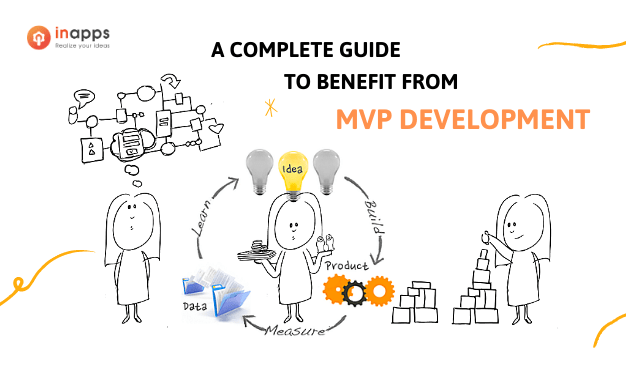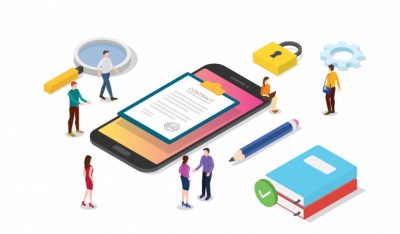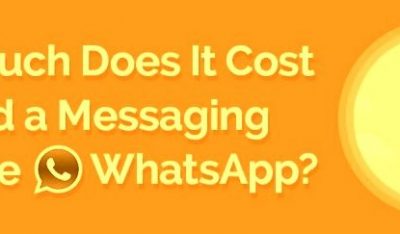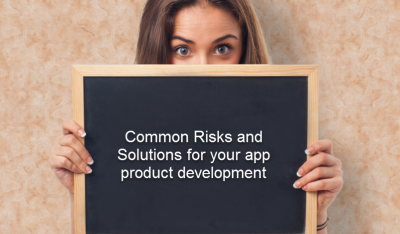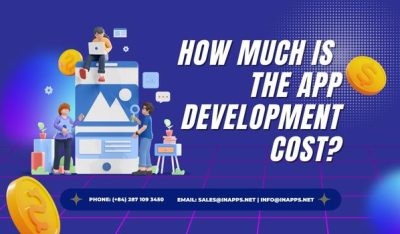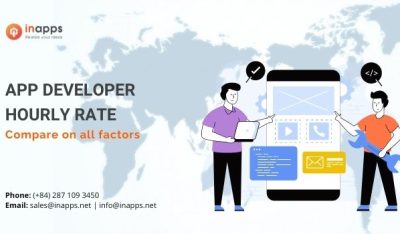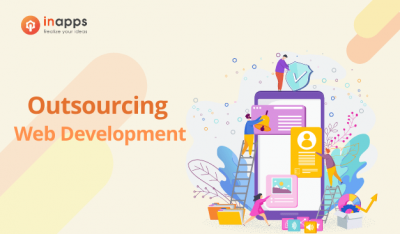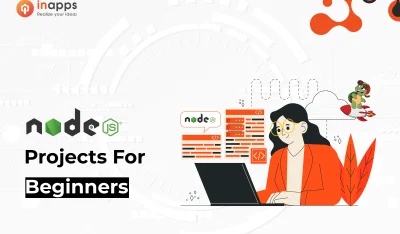- Home
- >
- Mobile apps development
- >
- A COMPLETE GUIDE TO BENEFIT FROM MVP DEVELOPMENT
The excellent starting point for a software project is MVP development (Minimum Viable Product Development).
Minimum viable product examples of successful companies such as Zappos, Dropbox, Twitter support the mentioned opinion. The MVP concept is not new with regard to MVP software development, MVP app development and MVP web development.
However, there is a lot of confusion around the MVP approach and how to benefit from MVP wisely. The following article is a complete guide about MVP development sorting everything out step by step.

Rome wasn’t built in a day but builders were laying bricks every hour. The same is true of software development.
The biggest and most indispensable apps you use today didn’t start their life as polished and expansive products. They all started as something much simpler with MVP app development.
What is MVP and what it looks like in practice?
Minimum Viable Product (MVP) is a frequently used word today in development. There are many MVP definitions available on the Internet, as many gurus have written reports on this topic.
The MVP concept was created by Frank Robinson, but received popularity through startup consultants Eric Ries and Steve Blank.
“The minimum viable product is that version of a new product which allows a team to collect the maximum amount of validated learning about customers with the least effort.”– Eric Ries
Steve Blank supplements the MVP definition with a quote:
“You’re selling the vision and delivering the minimum feature set to visionaries, not everyone.”
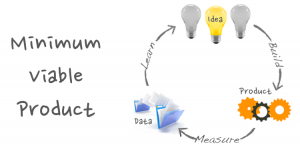
MVP development team
MVP is used for a wide variety of products including MVP software development.
It’s comprised of the minimum amount of features it takes for the core functionality of your product to understand the future product’s viability on the market. After creation, the product is tested on the market to see the level of demand for the whole product or specific function.
MVP’s role is to get feedback from the users and learn what they like about the product and what the things that they do not need are. It is usually used for pitching with investors as well.
-
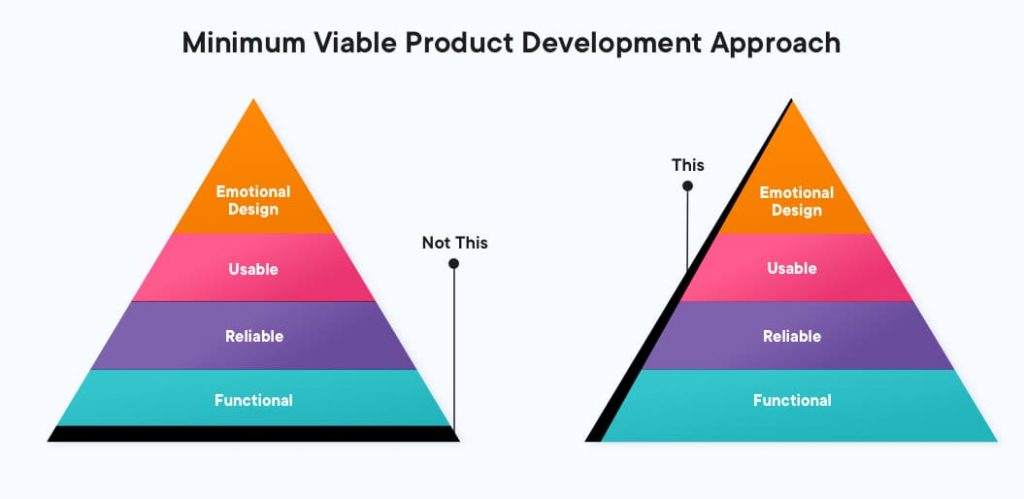
MVP web development
Simply put, MVP is similar to the pilot’s flight simulator. While pilots do not have to fly a plane (yet), they are expected to master the skills. These skills must ensure that the aircraft works before it is released into the wild. The development of a minimum viable product thus resembles going through the preflight checklist that is addressed before the pilot’s maiden flight.
Why do you need to start with MVP development?
What if we found ourselves building something that nobody wanted? In that case what did it matter if we did it on time and on budget? – Eric Ries
The purpose to build an MVP is to launch a product quickly, based on your idea, with a small budget. This approach allows you to collect users’ feedback for the primary product and include it in future iterations. With the help of an MVP, one can find the right audience, pull the ideas based on experience, and save time.
MVP allows you to market the concept without spending a lot of money and time. It may become a perfect solution for startups to test their ideas in practice. You can also use the MVP strategy when implementing a new feature, even if it is a long-lasted complex project.
Therefore, starting with MVP development helps you reduce risks and brings you plenty of benefits below:
Release your product faster
Building an MVP for your project means balancing between minimum design and maximum value. The project can move forward more rapidly, which means quicker delivery of products.
By releasing your MVP app so swiftly, you put an early stake in the ground for your solution and its specialty. Even better, you start to build relationships with customers that will form the base for later success. Your customers can interact with your brand early on and help shape the future development of your software through feedback.
Cost-Efficiency
Testing a more modest version of an app with real users before releasing it saves a large budget required for the entire product development. By building an MVP first, you can make sure that you’re investing in a project which is likely to be successful.
MVP development offers more affordable costs of starting up a business. You can save time and money on product development by treating it like a design project rather than a product development project. This is mainly because developers don’t need to handle much additional data related to your product unless they’re completely convinced that the product is mature enough to be used as a business tool. Instead, they need to focus on the initial features.
MVP works on the process of ‘minimum’ features required for the product to be ‘viable’ and function, thus, in turn, being highly cost-effective.
Less room for error – More opportunities for growth
Developing an MVP first, not only a client but also a team can feel more confident. When the scope of work is reduced, you get an early testing opportunity and take fewer project risks. As a result, a development team has less code to write and more time to experiment and iterate on the client’s idea.
Despite the limited capability scope of an MVP, it gives a business the potential to grow. Receiving valuable feedback from early app adopters, you can leverage it to further refine your product and speed up your development cycle. Most mobile app development projects are time-consuming, often costly, and can be just about the worst hobbies you could have. Starting with MVP development, however, you can update your product or even the whole business model at any time with less stress and more satisfaction.
A chance to find investors and raise funding
The best way to attract investors is by showing them a functional MVP with a solid group of early adopters to convince them that your project is worth being funded, which proves that the business model is valid and that your product brings value to users.
An MVP can showcase the seeds of what is expected to become a genuinely new and exciting product. And the audience will be not only a founding team but also potential investors. If done correctly, an MVP must show a product to a good advantage and display its strengths to attract and convince people to invest their money.
42% of startups fail because they don’t have the market need, and 29% of startups fail as they ran out of money. MVP covers such gaps.
Step-by-step to build an MVP
MVP app or MVP web development process usually includes the following steps:
1. Market Research
It is important to check if your idea fits the needs of the market. Therefore, market research is the most important part before MVP development.
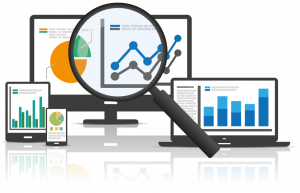 This way you understand your project capabilities, restrictions, and correlate your business goals with user expectations. Careful market research ensures that resources will not be wasted on an idea that users don’t need.
This way you understand your project capabilities, restrictions, and correlate your business goals with user expectations. Careful market research ensures that resources will not be wasted on an idea that users don’t need.
The more information you have, the more are the chances of success. Also, do not forget to keep an eye on what your competitors are offering, and how can you make your product idea stand out.
2. User map creation
This stage implies the entire product concept construction and product design that will guide its users to achieve their goals and make conversions for you. Mapping user journey helps to define priority features that can lead a user to his goal and satisfy his needs in the fastest and easiest way.

MVP development team
You should design an MVP app in a way that is most convenient for the user. Always keep the user’s perspective in mind when designing all functionality, from the moment they open the app until the moment they complete their task.
3. Prioritize MVP Features
Today, it is almost impossible to make something cheap, fast, and high-quality. Moreover, customers are a tech-savvy and educated audience that is hard to surprise. Not everyone is willing to sacrifice quality or the look, even if it is just a test.
Users are accustomed to the high quality that is expected in all new products.
-
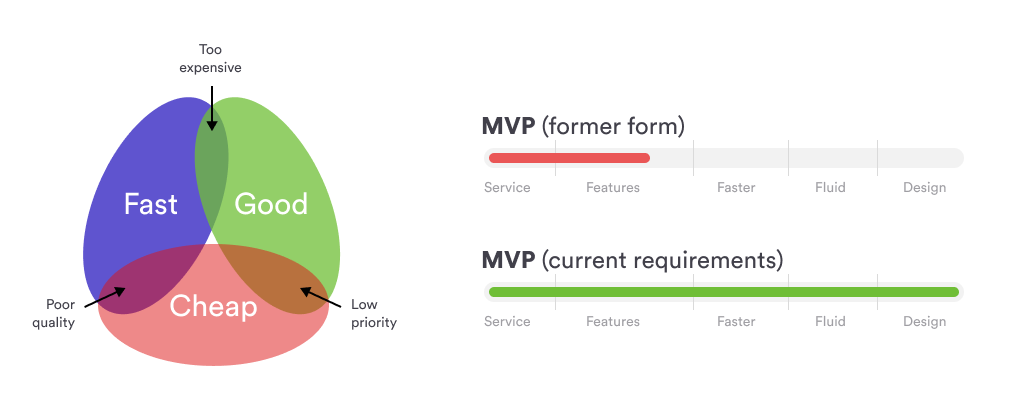
MVP web development
For quality MVP development, you should identify the basic set of features that can fulfill the needs of your users. Try not to overload your MVP with functionality as maybe your user needs something completely different while you spend resources.
You can identify possible features according to their necessity: what definitely should be, what maybe will do the product better, and what hypothetically can be added. Together with users’ insights, you will have a plan for further updates.
Unless your idea is fresh and unique, try building a superior product to attract users.
4. Build – Measure – Learn from your MVP
When building an MVP, consider the “Learn → Build → Measure” loop. It can be described in even simpler terms: develop, test, learn.
Keep in mind that an MVP is not lower quality than a final product, and still needs to fulfill your customer’s needs. Therefore, it must be easy to use, engaging, and suitable for your users.
The Do’s and Dont’s of MVP Development:
| DO | DON’T |
|
|
-
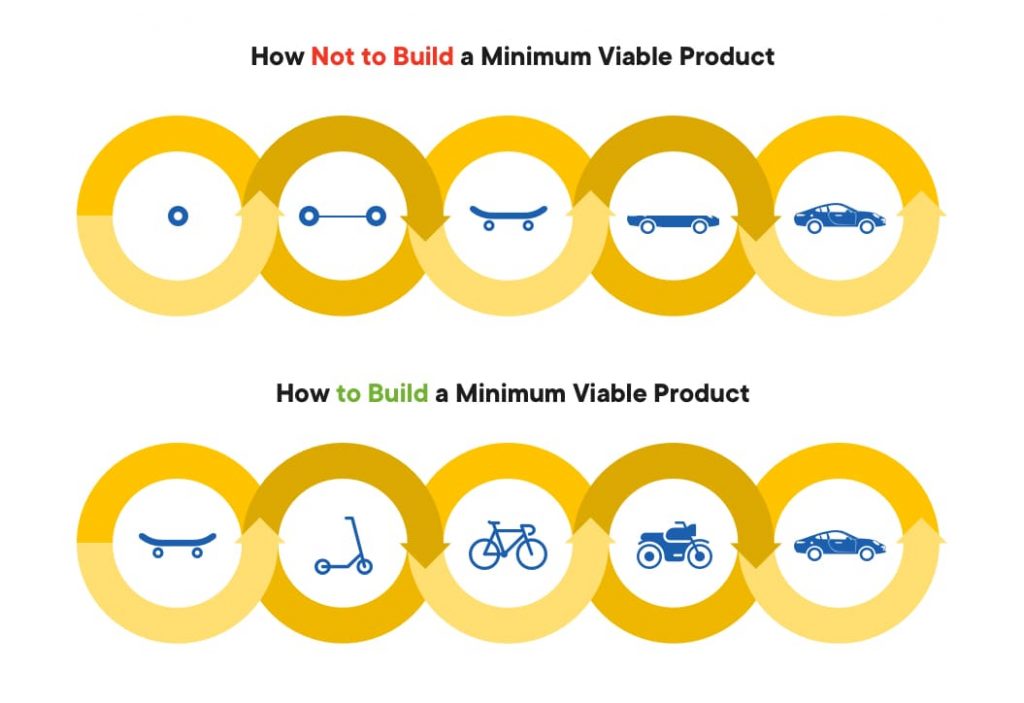
MVP development team
After the completion of product development, the product needs to be tested. Quality Assurance engineers, who work to improve the quality of the product (even if the product is not released) conduct the first testing stage.
Review everything thoroughly after launching the MVP, i.e. collect your client’s reaction to the release. With their feedback, you can determine the acceptability and competitiveness of your product in the market.
After that, comparing the necessary cost it takes to win a customer with the potential gain will help you verify the profitability of your idea before launching the product. These numbers should indicate that you’ve found a cost-effective way to acquire consumers. If they don’t, rethink your strategy: change your target market, product, and audience.
If you have an idea and want to test it in real market conditions, we are happy to create a quality MVP for you. You will get a Web or a Mobile app MVP with all essential features and designs ready for release. After alpha testing, we can create a full-fledged product that your customers will use.
Successful MVP development examples
Here are a few notable companies that launched MVPs successfully. This goes on to show what startups focus on when it comes to developing a key MVP feature set.
1. Facebook
When Facebook was launched, an MVP app was done just to connect students of schools and colleges all together via messaging. The idea was just to connect friends through a social platform, and organize gatherings. Facebook, in its early days, was built on the basic model of an MVP containing the needed functionality to fulfill its goal.
This application was launched to test among users, and it gathered lots of feedback. This resulted in making the application extremely popular over the internet, it currently has over 1.3 billion active users.
2. Airbnb
Their MVP helped validate the market and prove that people would be willing to use the product. The app co-founders Brian Chesky and Joe Gebbia created a website, posted photos of their own apartment there, and got three paying guests — that’s how it all began. Paying customers is one of the most meaningful metrics in MVP validation. So, the goal was achieved, and the idea proved workable. As of the end of 2019, Airbnb is estimated to be worth about $38 billion.
3. Spotify
They developed their minimum viable product (MVP) with a set of specific goals. They were trying to reduce the cost of getting into a subscription business, and they wanted to work closely with their customers and producers. They prototyped early and inexpensively, launched their app only after achieving their personal quality standards, and kept iterating based on the user feedback. Following the lean and agile principles, while iterating, Spotify has grown to have 100+ million paid and 200+ million monthly active users worldwide.
>> We can help you to be the next successful one. CONTACT US for a free consultation of MVP development.
Bring your app idea to life with InApps
Creating an MVP (Minimum Viable Product) will be the best way to reduce the risks and convert challenges to opportunities. If you want to hire an MVP development team in Vietnam, look no further than InApps Technology!
-
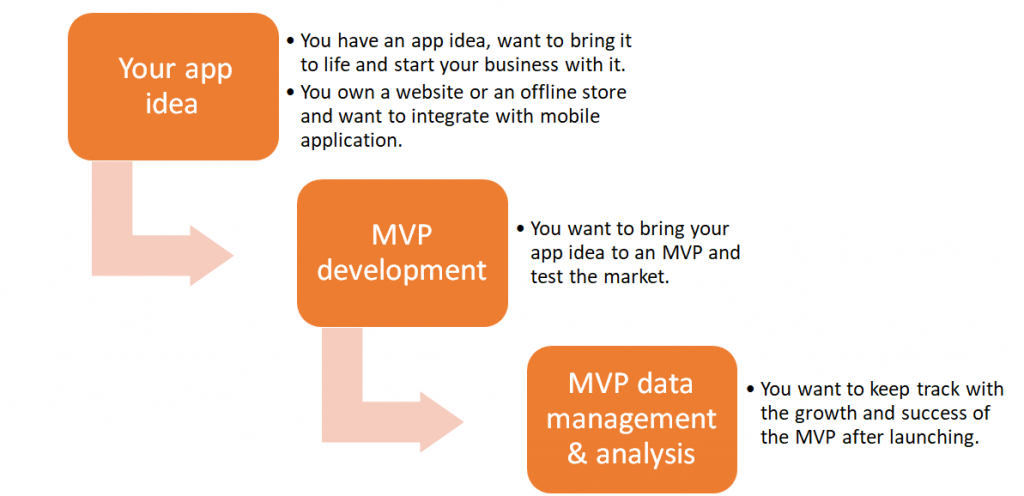
MVP app development company
After identifying your app idea journey and considering your budget, you had better go with an offshore MVP app development company for cost-efficiency.
InApps Technology helps clarify your app idea journey to work with outsourcing vendors through the below process:
-

MVP app development company
By following InApps custom mobile application development process below, you can have a full picture of how your app can be brought to life:

MVP app development company
List of Keywords businesses find our service on Google:
[sociallocker id=”2721″]
| mvp development company |
| mvp development |
| mvp development team |
| mvp web development |
| saas mvp development |
| mvp web design |
| mvp web app |
| minimum viable product development services |
| mvp development process |
| mvp development for enterprises |
| developing an mvp |
| mvp website development |
| mvp web application |
| mvp product development agency |
| mvp app |
| benefits of an mvp for your startup |
| bespoke mvp development company |
| mvp in web development |
| saas mvp development company |
| mvp app development |
| mvp development 2020 |
| mvp development framework |
| custom mvp software development |
| custom mvp development |
| mvp software development company |
| benefits of building an mvp |
| saas mvp development firm |
| custom mvp app development services |
| app agency mvp |
| app mvp template |
| minimum viable product development consultancy |
| mvp creation |
| mvp software development |
| zappos mvp |
| mvp application development company |
| mvp app development company |
| minimum viable mobile app development consultant |
| minimum viable product checklist |
| mvp in development |
| mvp development consultant |
| top mvp development company |
| development mvp |
| mvp development application |
| minimum viable product app development services |
| minimum viable mobile app development consultancy |
| mvp developemt |
| minimum viable mobile app development consulting |
| mvp application development services |
| developing mvps |
| mvp development company in usa |
| minimum viable app development consultancy |
| minimum viable app development consultant |
[/sociallocker]
Let’s create the next big thing together!
Coming together is a beginning. Keeping together is progress. Working together is success.




